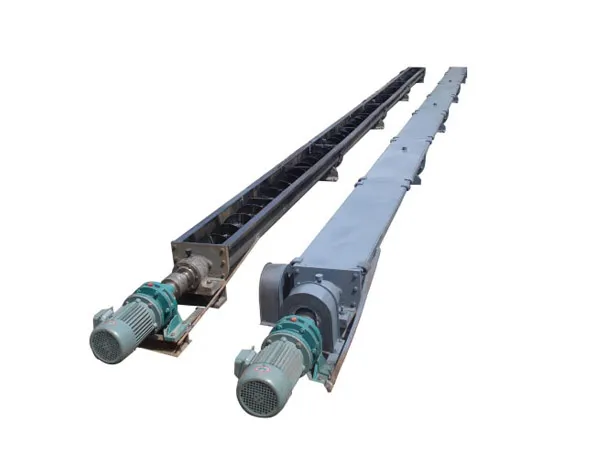Выбор правильного винтовой конвейер имеет решающее значение для обеспечения эффективной и надежной обработки материалов в различных отраслях промышленности.. Перемещаете ли вы мелкие порошки, сыпучие материалы, или полутвердые отходы, Выбор конвейера, соответствующего вашему конкретному применению, может повысить производительность., Снижение затрат на техническое обслуживание, и продлить срок службы оборудования. С многочисленными конфигурациями, материалы, и дизайны доступны, может быть ошеломляющим, чтобы найти идеальную посадку. Это руководство проведет вас через основные факторы, которые следует учитывать при выборе винтового конвейера, в том числе тип материала, емкость, угол наклона, и операционная среда, Помогая принять хорошо информированное решение, адаптированное к вашим потребностям.
Винт конвейер выберите

1. Определите переданный материал (Самый важный шаг):
Название материала: Быть конкретным (например, “Портландцемент,” “Соевая еда,” “Влажный песок”).
Объемная плотность: Вес единицы объема (например, фунты/футы или кг/м ³). Необходим для расчета мощности и требований к мощности..
Размер частиц & Распределение: Это мелкий порошок, зернистый, гранулы, комковатый, жилистый? Дайте минимум, максимум, и средние размеры, если возможно.
Текучесть: Как легко оно течет? (например, сыпучий, вялый, липкий, псевдоожижаемый). Если возможно, найдите его угол естественного откоса..
Абразивность: Изнашивается ли оборудование? (например, песок, оксид алюминия обладает высокой абразивностью). Это диктует выбор материала для шнека и желоба..
Коррозионная активность: Имеет ли он химическое воздействие на материалы?? (например, кислоты, соли). Влияет на выбор материала (марки нержавеющей стали, специальные покрытия).
Температура: Рабочая температура материала. Влияет на выбор материала, типы подшипников/уплотнений, и потенциальное расширение/сжатие.
Содержание влаги: Может существенно повлиять на текучесть, липкость, и коррозионная активность.
Рыхлость: Легко ли материал ломается или разрушается?? Могут потребоваться более низкие скорости или особые конструкции полета..
Особые характеристики:
Гигроскопичный: Впитывает влагу из воздуха.
Взрывоопасно/Огнеопасно: Требует особых мер безопасности (взрывозащищенные двигатели, заземление, надлежащее уплотнение).
Токсичный/опасный: Требуется сдерживание (полностью закрытый, специальные уплотнения).
Пищевой/санитарный: Требуются определенные материалы (нержавеющая сталь), заканчивает (полированный), и конструктивные особенности (легко очищаемый, нет щелей).
Липкий/накапливается: Может потребоваться конструкция без вала, специальные покрытия, или определенные типы рейсов.
2. Определите необходимую мощность (Пропускная способность):
Ставка: Сколько материала необходимо переместить за единицу времени? Четко указывайте единицы измерения (например, тонны в час (ТПХ), кг/мин , кубический фут в час (КФХ), м³/час).
Основа: Стоимость зависит от веса или объема?? Будьте последовательны. Если по весу, вам нужна объемная плотность, чтобы преобразовать ее в объем для определения размеров.

3. Определите конфигурацию конвейера:
Расстояние транспортировки: Горизонтальный (или наклонный) длина от центра входного отверстия до центра выходного отверстия.
Угол наклона: Конвейер горизонтальный? (0°) или наклонный? Наклоны значительно снижают производительность и увеличивают требования к мощности.. Точно укажите угол. Вертикальные конвейеры (90°) представляют собой особую категорию.
…
Более подробную информацию о том, как выбрать подходящий шнековый конвейер, пожалуйста, нажмите здесь: https://www.zymining.com/en/a/news/screw-conveyor-choose.html


